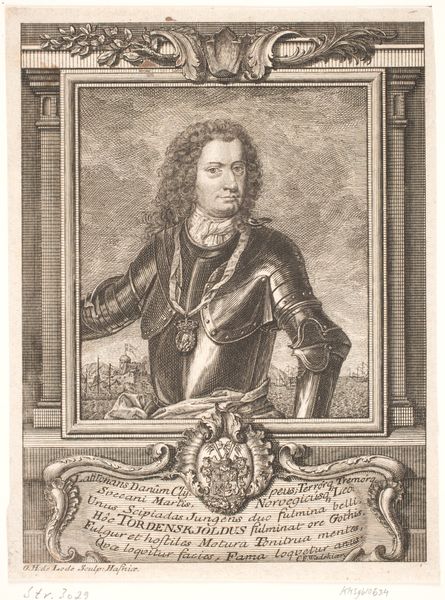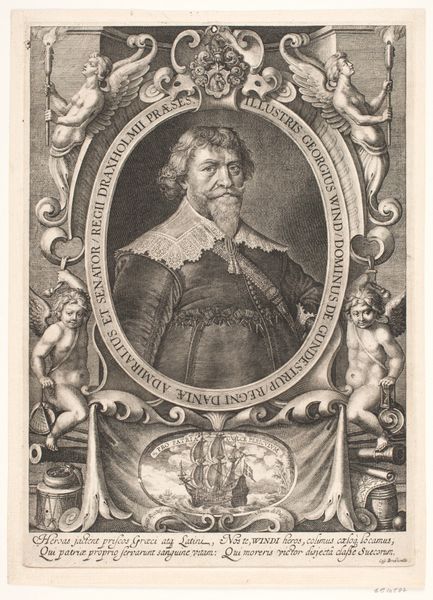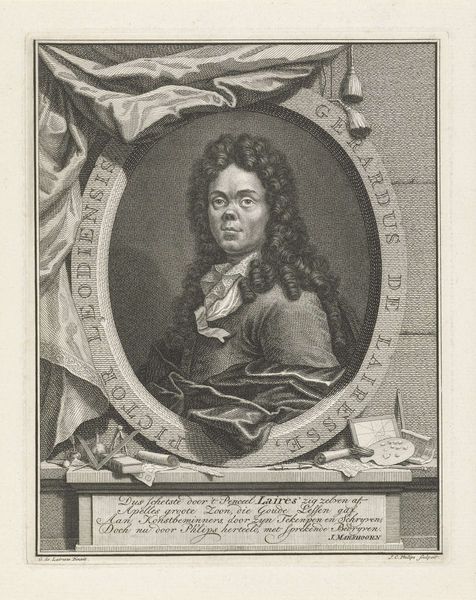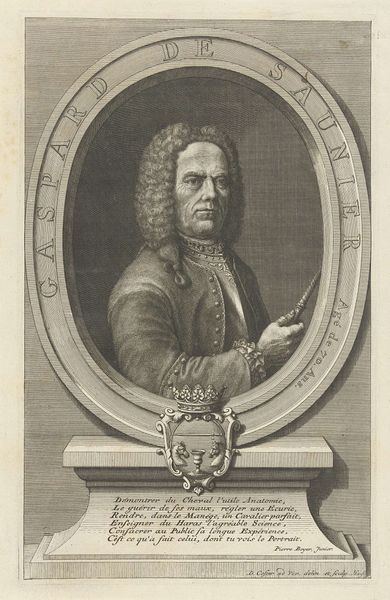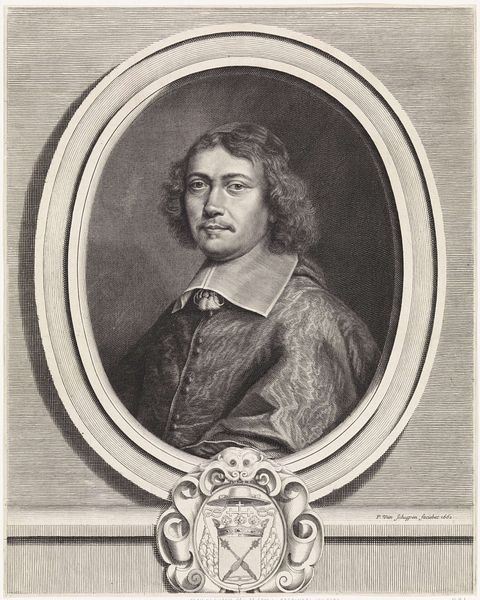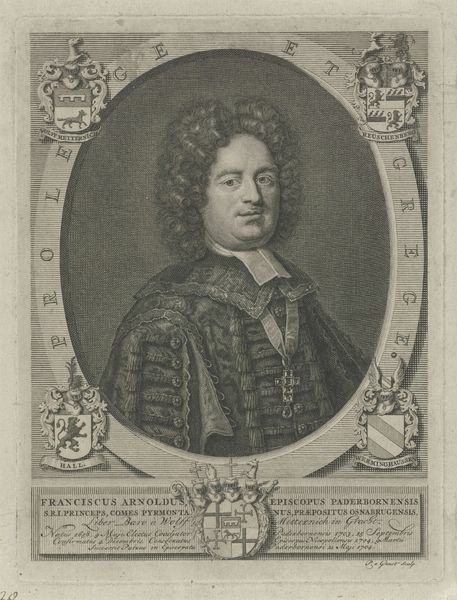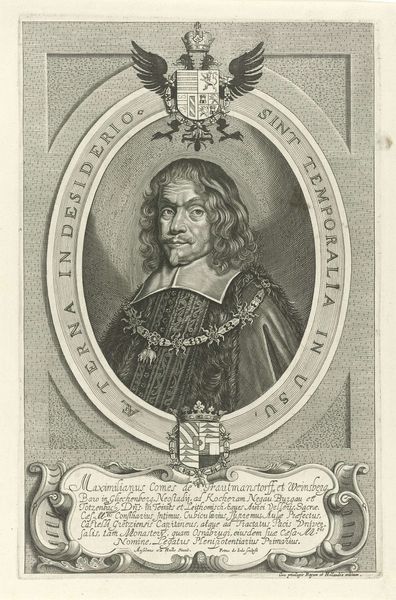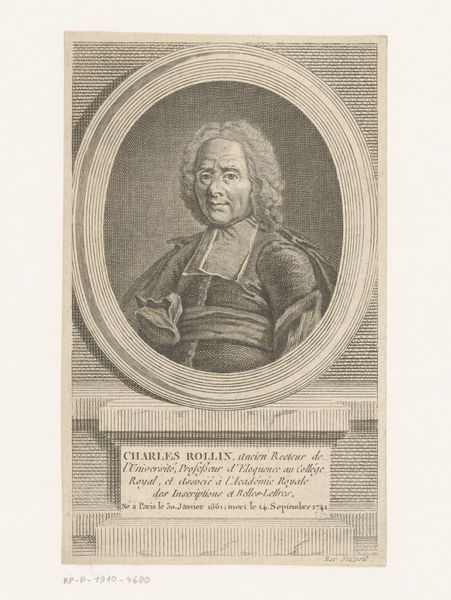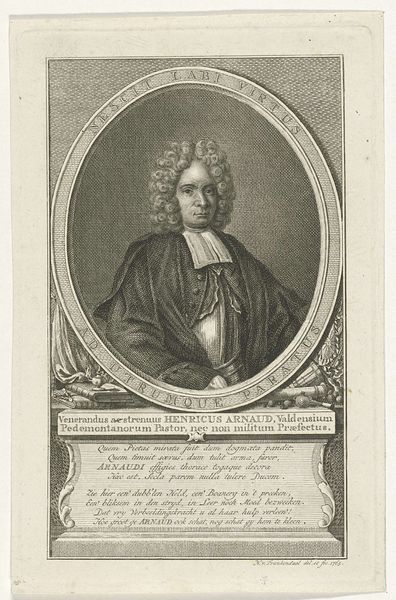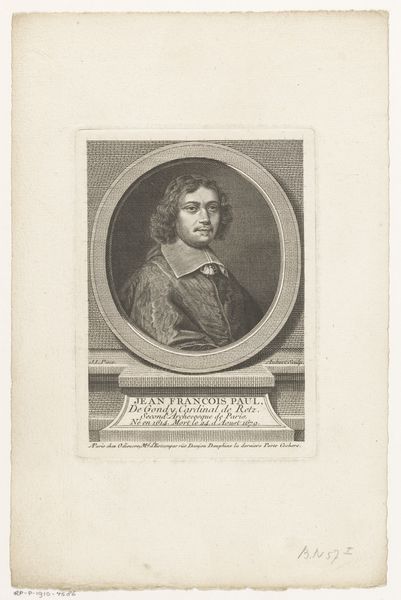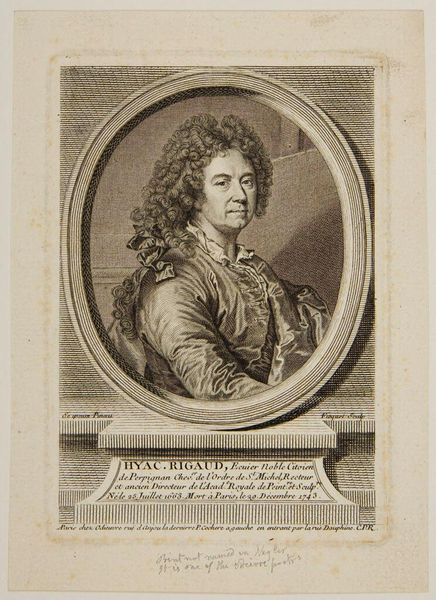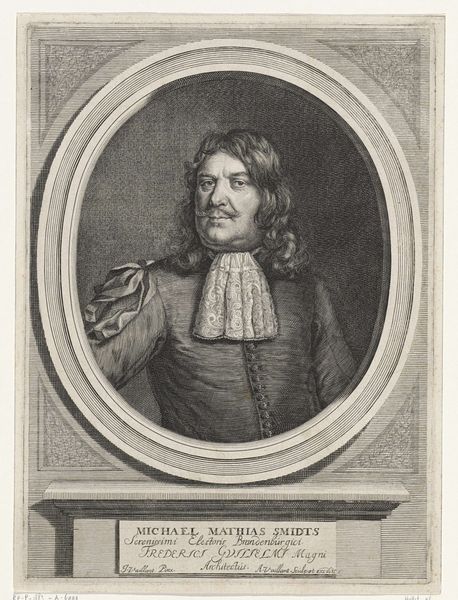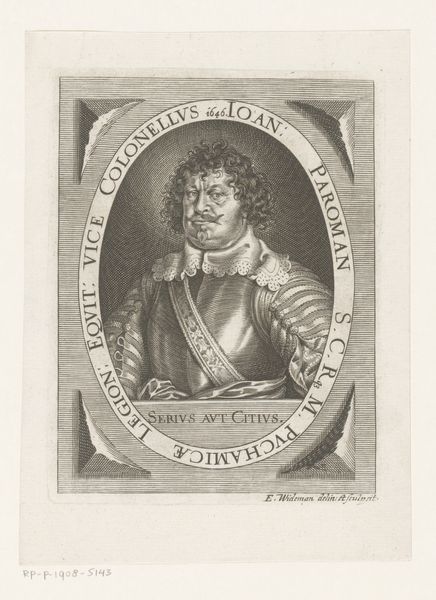
print, engraving
#
portrait
#
baroque
# print
#
old engraving style
#
line
#
history-painting
#
engraving
Dimensions: height 266 mm, width 163 mm
Copyright: Rijks Museum: Open Domain
Editor: Ah, here we have "Portret van Alphonse de Berghes," a rather formal engraving created sometime between 1710 and 1725 by Jan Baptist Jongelinx. Curator: Well, hello there, your Grace! My first thought? Intriguing. He's got that sly little smile like he knows all the secrets, doesn’t he? Editor: He certainly presents a figure of authority, framed within that elegant oval and elaborate base. Look closely at the texture Jongelinx achieved. Engraving is such a fascinating process; labor-intensive and reliant on skill. Consider the paper too; handmade, laid paper, likely rag-based. Curator: The base almost makes it feel like a tiny monument, a paper altar to commemorate someone important, which I believe the Bishop was at that time in Belgium. Do you think the medium flattens his presence though? I’m sensing more archetype than an actual person. Editor: Flattening might be a limitation of the print medium, but the very nature of prints made such images more accessible. We are not looking at a unique portrait intended for a private collection. Consider how engravings were used to disseminate information and bolster political power. Copies made this image ubiquitous within the community, potentially shaping public perception of the Bishop. Curator: Power indeed! It feels almost like a baroque superhero portrait! "Defender of the Faith", engraved with ultimate finesse! There is also the inclusion of the Bishop’s Coat of Arms which also signifies status, and also suggests the idea of history and memory attached to a physical object which could itself become an emblem for future generations. Editor: Absolutely! This object connects so well to a study in circulation of images, the material conditions of production, and the shaping of social identities. We might easily forget to address these issues when simply looking at portraiture. Curator: True. You see the paper, I see the presence behind the image. It seems he truly looks back at us. I still feel, staring into the Bishop's slightly lopsided portrait that this print hints at deeper things and untold tales and the way Jan Baptist Jongelinx managed to capture this into a paper will still allow people to tell his tale! Editor: Indeed. By interrogating process, materiality, and historical context, we move beyond aesthetic appreciation to unpack the power dynamics embedded within this intriguing portrait.
Comments
No comments
Be the first to comment and join the conversation on the ultimate creative platform.
